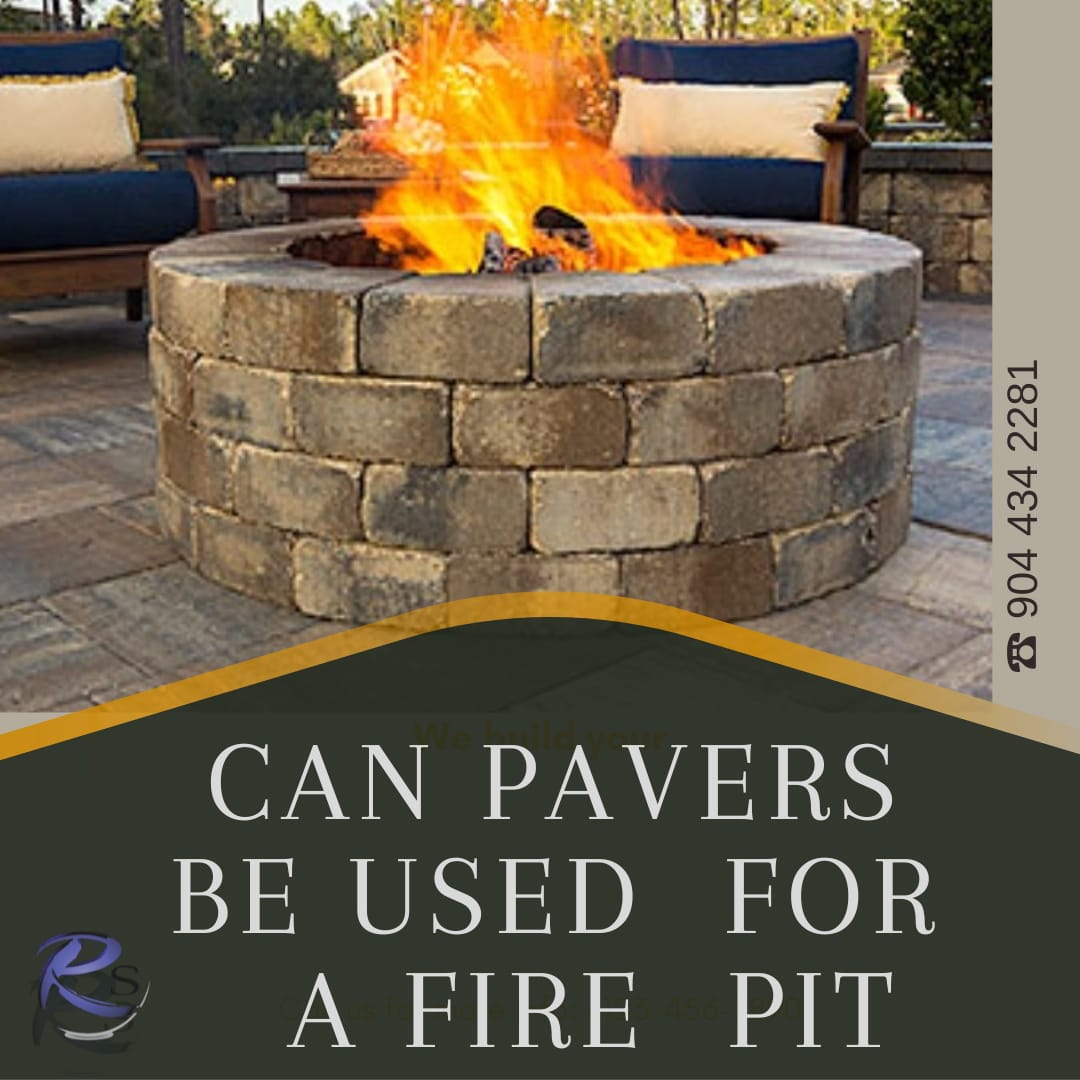If you’re looking to create a warm and inviting outdoor space, adding a fire pit can be an excellent way to do so. Fire pits provide not only warmth but also the perfect gathering place for friends, family, and neighbors. But what kind of surface should you use when installing your fire pit? Many people are now turning to pavers as a way of creating a unique look for their fire pits. In this blog post, we will discuss the pros and cons of using paver for your fire pit, as well as some tips on how to install them correctly.
Benefits of Pavers Around Fire Pits
When it comes to fire pits, there are many different materials that can be used to create them. Paver are a popular choice for many people because they are durable and long lasting. They can also be used to create a variety of different designs, which can make your fire pit unique.
Pavers around fire pits have many benefits. They can help to protect your fire pit from the elements and prevent it from being damaged by the weather. They can also help to reflect heat back into the fire pit, which can help to keep it warmer for longer. Additionally, pavers can provide a safe surface for you to walk on when you are near the fire pit.
Using Pavers to Enhance Fire Pits Aesthetics
When it comes to choosing materials for your fire pit, pavers are a great option. Not only are they durable and easy to install, but they can also add a touch of style to your outdoor space. Here are a few tips on how to use pavers to enhance the aesthetics of your fire pit:
- Choose the right size and shape of pavers. The size and shape of the pavers you choose will depend on the overall size and shape of your fire pit. If you want a more uniform look, opt for square or rectangular paver. For a more organic look, choose irregularly shaped pavers.
- Select a color that complements your other outdoor décor. Pavers come in a variety of colors, so you should have no trouble finding an option that coordinates with your existing patio furniture and landscaping.
- Create an interesting pattern. Once you’ve selected the right size and shape of pavers, you can get creative with the layout. There are endless possibilities when it comes to patterns, so take some time to experiment until you find something you love.
- Add accents as desired. In addition to the basic paver design, you can also add accents like fire glass or decorative stones. This is a great way to personalize your fire pit and make it truly unique
Advantages of Pavers Over Other Materials
If you’re considering adding a fire pit to your backyard, you may be wondering what type of material to use for the project. Pavers are a great option for fire pits because they offer a number of advantages over other materials, such as concrete or brick.
Pavers are easier to work with than concrete or brick, so you’ll be able to get the fire pit installed more quickly. They’re also more affordable than many other materials, making them a great option if you’re on a budget.
Pavers are also much more durable than most other materials, so you won’t have to worry about them cracking or breaking over time. And if one of the pavers does become damaged, it’s easy to replace without having to replace the entire fire pit.
Creating a Heat Resistant Fire Pit with Paver
Pavers are an excellent material for creating a heat resistant fire pit. The key is to choose the right type of paver and to construct the fire pit properly.
There are two main types of pavers: natural stone pavers and concrete pavers. Natural stone pavers, such as granite or slate, are more heat resistant than concrete pavers. However, they are also more expensive. Concrete pavers are a good budget-friendly option that can still withstand high temperatures.
When building a paver fire pit, it’s important to use heat-resistant mortar and to line the inside of the pit with fire bricks. This will help reflect heat away from the paver surface and prevent damage.
Once your fire pit is built, you can enjoy it for many years to come!
Choose the Right Type of Paver for your Project
There are many different types of paver available on the market, and choosing the right type for your project can be difficult. However, it is important to choose the right type of paver for your project in order to ensure that your project is completed successfully.
The most important factor to consider when choosing a paver for your project is the climate. If you live in an area with a lot of rainfall, you will need to choose a paver that is able to withstand the elements. Additionally, if you live in an area with extreme temperatures, you will need to choose a paver that can withstand high temperatures.
Another factor to consider when choosing a paver for your project is the type of surface you plan on using the pavers for. If you plan on using the pavers for a patio or walkway, you will need to choose a different type of paver than if you were using them for a driveway or pool deck. The type of surface you plan on using the paver for will determine the size and shape of pavers you need to use.
Finally, you need to consider your budget when choosing pavers for your project. There are many different types of pavers available at different price points. You need to decide how much money you are willing to spend on your project before choosing the right type of paver.
By considering these factors, you can narrow down the choices and find the perfect type of paver for your project
Fire Pits Installation Tips with Pavers
When installing a fire pit with pavers, there are a few things to keep in mind. First, make sure the area where the fire pit will be located is level. This will help ensure that your fire pit doesn’t wobble or tilt to one side.
Next, it’s important to choose the right size pavers for your project. If you’re using brick pavers, for example, you’ll want to make sure they’re at least 2 inches thick. This will help prevent them from cracking under the intense heat of the fire.
Finally, when installing pavers around your fire pit, be sure to leave a few inches of space between each paver. This allows for proper drainage and prevents the pavers from shifting or cracking over time.
Pros and Cons of Paver Versus Other Fire Pits Surfaces
When it comes to choosing a fire pit surface, there are pros and cons to consider for each option. Here, we will compare pavers versus other popular fire pit surfaces to help you make the best decision for your needs.
Pavers are a popular choice for fire pits because they are durable and easy to install. However, pavers can be more expensive than other options, and they may require more maintenance over time.
Concrete is another popular choice for fire pits. It is less expensive than pavers, but it is not as durable and may crack over time. Gravel is the least expensive option, but it can be difficult to keep in place and may not provide as much heat as other options.
Tips for Keeping Paver Around Fire Pits Protected
When it comes to fire pits, one of the most important things to consider is how you can keep your pavers protected. After all, these are an investment and you want to make sure that they last for as long as possible. Here are a few tips to help you keep your pavers around fire pits protected:
- Use a ground cover: A ground cover can help protect your pavers from the heat of the fire pit. It will also help to insulate them from any sparks that may fly up.
- Place a screen over the top: A screen can help to catch any sparks that may fly up and prevent them from damaging your pavers.
- Keep a hose handy: In case any embers or sparks do get on your pavers, it’s important to have a hose nearby so you can quickly put out the fire.
- Inspect regularly: Be sure to inspect your pavers regularly for any signs of damage. If you see any cracks or chips, be sure to repair them right away so they don’t get worse.
By following these tips, you can help ensure that your pavers around fire pits will last for many years to come.
How to Clean and Maintain Paver Around Fire Pits
If you are using pavers for your fire pit, it is important to clean and maintain them regularly. Here are some tips on how to do this:
- Sweep the pavers regularly to remove any dirt or debris.
- If there are any stains, use a mild detergent and scrub brush to remove them.
- Rinse the paver with clean water after cleaning.
- Apply a sealer to the pavers if they start to show signs of wear and tear. This will help protect them from further damage.
- Inspect the pavers regularly for any cracks or chips and repair them as needed
Finding the Right Size Paver for Your Fire Pit
When it comes to choosing the right size paver for your fire pit, there are a few things to keep in mind. The first is the size of your fire pit. You’ll want to make sure that the pavers you choose are big enough to fit comfortably around the fire pit. The second is the type of paver you’re using. If you’re using concrete pavers, you’ll want to make sure that they’re thick enough to withstand the heat of the fire. Finally, you’ll want to consider the shape of your paver.
If you’re using square or rectangular pavers, you’ll want to make sure that they’re wide enough to allow for proper airflow around the fire pit. Prime.
Paver Color and Finishes to Consider for Your Fire Pit
When you are choosing pavers for your fire pit, there are many factors to consider. The first is the color of the pavers. You want to choose a color that will complement your home and patio furniture. The second factor is the finish of the pavers. There are many finishes available, including smooth, textured, and tumbled. You also want to consider the size of the pavers.
The larger the paver, the more heat it will retain.

